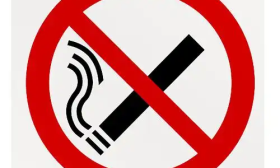The Ultimate Guide to Cleaning Your Vape's Airflow for a Purer, Tastier Hit
There's nothing quite like that first, smooth, flavorful draw from a perfectly functioning vape. The vapor is rich, the taste is crisp, and the sensation is satisfyingly clean. But over time, that perfect experience can become a distant memory, replaced by a weak, gurgling, or burnt-tasting puff. More often than not, the culprit isn't a faulty device or bad e-liquid—it's a neglected airflow system.
Learning how to clean vape airflow is one of the most crucial, yet frequently overlooked, skills for any vaper. It’s the secret to maintaining your device's performance, extending its lifespan, and ensuring every session is as enjoyable as the first. A clean airflow path is fundamental to achieving optimal vape flavor and cloud production. When residue, old e-liquid, and pocket lint clog the passages, it doesn't just muffle the taste; it can lead to more serious issues like leaking, overheating, and even permanent damage.
This comprehensive guide is designed to walk you through the entire process, from understanding why it's necessary to executing a flawless clean. We'll demystify the components involved and provide step-by-step instructions to eliminate gurgling and burnt taste from your vape. By the end, you'll be an expert in maintaining your vape device for peak performance.
Why Cleaning Your Vape Airflow is Non-Negotiable
Think of your vape's airflow system as its lungs. It's the pathway through which air is drawn in, mixed with the vaporized e-liquid, and delivered to you. When this pathway is clear, the operation is seamless. When it's dirty, everything suffers. Here’s what happens when you skip your regular cleaning routine:
- Muted and Stale Flavor: The most immediate sign of a dirty airflow is a dramatic loss of flavor. Residual e-liquid coats the air channels and, over time, oxidizes and turns rancid. This old, gunky liquid contaminates your fresh e-liquid, resulting in a stale, unpleasant taste. If you're wondering why your new strawberry custard tastes vaguely of last month's tobacco blend, this is why.
- Reduced Vapor Production: A restricted airflow means less air is available to mix with the vapor. This leads to weaker, thinner clouds. If you have to draw harder than usual to get a decent hit, it's a clear signal that your vape airflow maintenance is overdue.
- Gurgling, Spitting, and Leaking: This frustrating trio is often caused by a blockage in the airflow. When the air path is obstructed, suction can pull excess e-liquid into the chamber and up the chimney, leading to a gurgling sound and hot e-liquid "spitback" on your tongue. In severe cases, it can cause the device to leak from the airflow holes.
- Burnt Hits: For pod systems and tanks with pre-built coils, a clogged airflow can prevent e-liquid from properly wicking into the coil's cotton. The coil then heats up without enough liquid, resulting in that dreaded, harsh burnt hit that can ruin a coil in an instant.
- Stiff or Difficult Draw: Debris physically blocks the smooth passage of air, making the draw feel tight and uncomfortable, whether you're a Mouth-to-Lung (MTL) or Direct-Lung (DL) vaper.
- Battery Strain and Device Longevity: A dirty system forces the device to work harder to produce vapor. This can put unnecessary strain on the battery and the internal electronics, potentially shortening the overall life of your mod or battery.
Understanding Your Vape's Airflow System
Before you start cleaning, it's helpful to know what you're cleaning. The airflow system isn't just one hole; it's a series of components that work together.
- Airflow Inlet Holes: These are the visible holes on the base or side of your tank or pod. They are the entry point for air.
- Airflow Control Ring: This is the adjustable ring that rotates to open or close the inlet holes, allowing you to customize your draw.
- The Airflow Channel: This is the internal pathway that directs the air from the inlet holes up through the coil.
- The Coil and Chimney: The air passes over the coil, where it picks up the vapor, and then travels up the chimney to the drip tip.
Gunk accumulates in all these areas, but the inlet holes and the base of the coil are often the ground zero for blockages.
Your Step-by-Step Guide to a Perfectly Clean Airflow
This process works for most refillable vape tanks and pods. Always consult your device's manual for any specific disassembly instructions.
What You'll Need:
- Warm water
- A small bowl
- Paper towels or a clean, lint-free cloth
- Cotton swabs (Q-tips)
- A toothpick or a needle (for stubborn gunk)
- Isopropyl alcohol (optional, for deep cleaning)
- A dry, clean towel
Step 1: Disassemble Your Tank or Pod
Safety first! Remove the tank or pod from your battery mod. Then, carefully take it apart. This typically means unscrewing the base from the glass tube and removing the coil. Separate the drip tip, the top cap, the glass, and the base. If you have a pod system, simply remove the pod from the battery. For non-rebuildable pods, you may not be able to disassemble them further, but you can still clean the contacts and the mouthpiece.

Step 2: The Initial Rinse
Place all the disassembled parts (except the coil!) in a bowl of warm water. Let them soak for a few minutes to loosen any dried e-liquid. Swirl them around and then rinse each piece under warm running water. This will wash away the majority of the surface residue.
Step 3: The Detailed Cleaning - Tackling the Airflow Holes and Base
This is the core of how to clean vape airflow.
- Focus on the Airflow Control Base: Take the base of your tank—the part with the airflow holes and the control ring.
- Use Cotton Swabs: Dampen a cotton swab with warm water or a small amount of isopropyl alcohol. Gently but firmly insert the tip of the swab into each airflow hole. Rotate it to scrub the inside of the channel. You'll likely see brown or dark residue come off on the cotton. Use multiple swabs until they come out clean.
- Clean the Control Ring: Rotate the airflow control ring to fully open and fully closed positions. This will expose new areas where gunk can hide. Use the cotton swab to clean these newly exposed slots and the ring itself.
- Tackle Stubborn Debris: For hardened gunk that won't come out with a swab, a toothpick or a needle can be used with extreme care. Gently scrape the inside of the airflow channel. Be very careful not to scratch or damage the metal, as this can create rough spots for more gunk to cling to in the future.
- Wipe Down Contacts: Use a swab or cloth to wipe the 510 connection pin on the base of the tank and on your mod. Dirty contacts can lead to poor performance and "no atomizer" errors.
Step 4: Drying - The Most Important Step
This step cannot be rushed. Any leftover moisture will severely impact your vape's performance and can be dangerous.
- Shake off all the components to remove excess water.
- Use a paper towel or lint-free cloth to pat dry each piece, paying special attention to the threading and the airflow channels.
- Take a dry cotton swab and run it through the airflow holes one final time to absorb any hidden moisture.
- Lay all the parts on a dry towel and let them air dry completely. This could take anywhere from 30 minutes to a few hours. Do not reassemble or use your vape until you are 100% certain every component is bone dry.
Step 5: Reassemble and Prime
Once everything is dry, it's time to put your vape back together.
- Reassemble your tank in the reverse order of disassembly.
- Install a new coil for the best possible experience. A clean tank with an old, gunky coil defeats the purpose. If you must reuse a coil, ensure it is also clean and dry.
- Prime your new coil by applying a few drops of e-liquid directly onto the cotton wicking ports. Fill your tank and let it sit for 5-10 minutes to ensure the cotton is fully saturated.
- Reattach the tank to your mod, start at a lower wattage, and take a few test puffs. You should notice an immediate improvement in flavor and smoothness.
Advanced Tips for Stubborn Situations
- For Deep Cleaning with Isopropyl Alcohol: If you have persistent, sticky gunk, a soak in isopropyl alcohol (90% or higher) can work wonders. Soak the metal and glass parts (not the coil or O-rings) for 10-15 minutes, then scrub with a swab. Rinse thoroughly with water afterward and ensure it is completely dry before use.
- Dealing with a Flooded Coil: If your vape is gurgling after a cleaning or refill, it might be flooded. Simply wrap a paper towel around the airflow holes and flick the tank downward several times. This will force the excess liquid out. You can also fire the device for a second while gently blowing into the mouthpiece (to push air out the airflow holes).
- Ultrasonic Cleaners: For the dedicated enthusiast, a small ultrasonic cleaner is the ultimate tool for maintaining your vape device. It uses high-frequency sound waves to blast away residue from every nook and cranny.
Establishing a Cleaning Schedule
Consistency is key. Don't wait for problems to arise.
- Basic Clean: Every time you change your coil (usually every 1-2 weeks), give the tank a quick rinse and dry.
- Thorough Clean: Once a month, or whenever you change e-liquid flavors dramatically, perform the detailed cleaning process outlined above.
- Visual Check: Make it a habit to visually inspect your airflow holes for lint or debris before you use your vape, especially if you carry it in your pocket or bag.
A clean vape is a happy vape. By integrating this simple vape airflow maintenance routine into your vaping life, you are investing in a consistently superior experience. You'll save money on coils, extend the life of your hardware, and, most importantly, ensure that every single draw is packed with the pure, intended flavor and satisfying cloud production you deserve. So grab your cotton swabs, and give your device the refresh it needs. Your taste buds will thank you.








